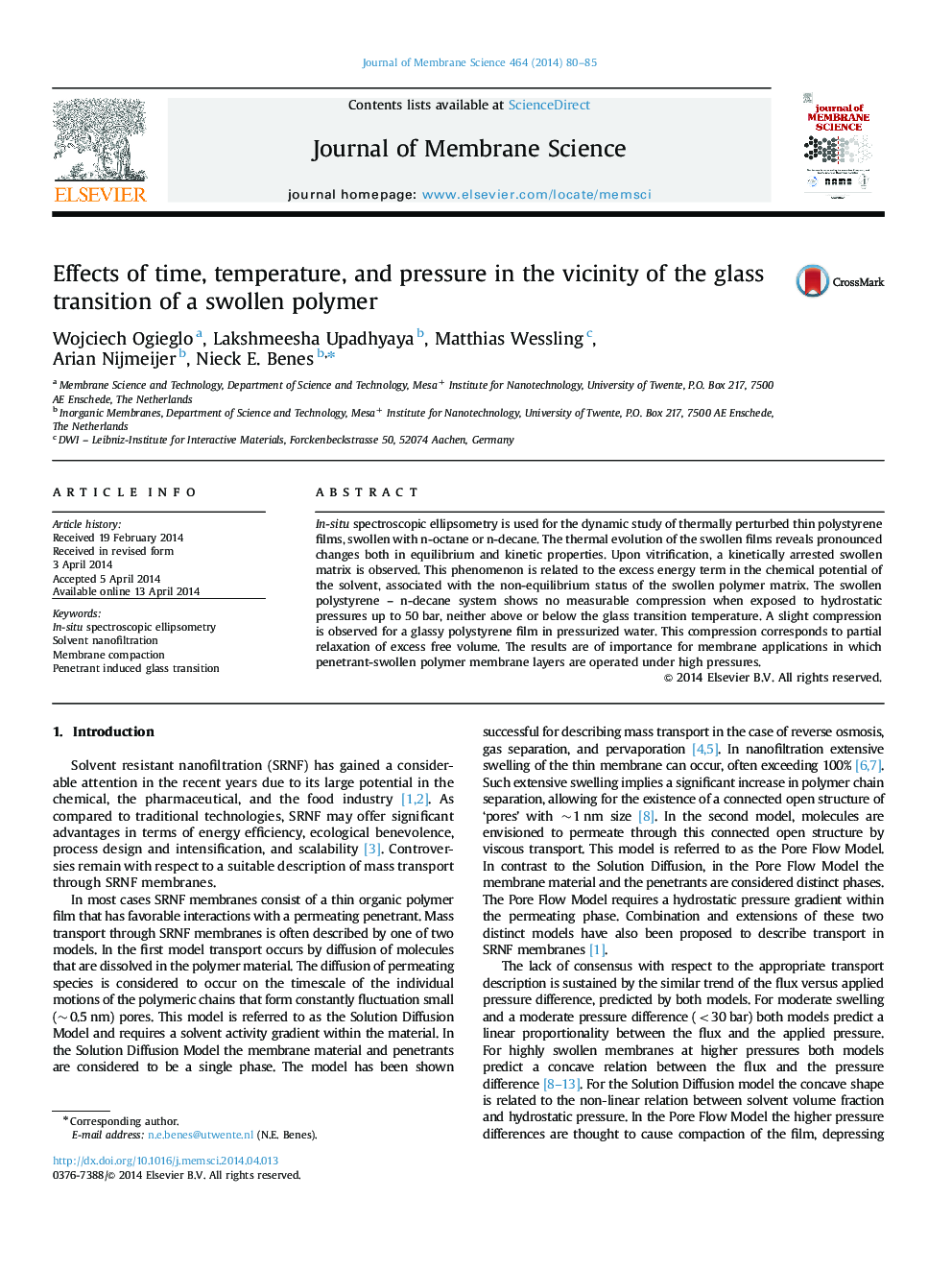| کد مقاله | کد نشریه | سال انتشار | مقاله انگلیسی | نسخه تمام متن |
|---|---|---|---|---|
| 633536 | 1456035 | 2014 | 6 صفحه PDF | دانلود رایگان |
• Dynamic response of thin, swollen, model glassy system to temperature and hydrodynamic pressure.
• Direct measurement of the actual dilation of the swollen films by in-situ high-pressure ellipsometry.
• Below Tg of the mixture, an over-saturated system with arrested network and mobile solvent is obtained.
• Hydrostatic pressure has no significant impact on the dilation of the swollen film both above and below its Tg.
• Irreversible, slight compaction is possible in a dry polymer exposed to a non-solvent.
In-situ spectroscopic ellipsometry is used for the dynamic study of thermally perturbed thin polystyrene films, swollen with n-octane or n-decane. The thermal evolution of the swollen films reveals pronounced changes both in equilibrium and kinetic properties. Upon vitrification, a kinetically arrested swollen matrix is observed. This phenomenon is related to the excess energy term in the chemical potential of the solvent, associated with the non-equilibrium status of the swollen polymer matrix. The swollen polystyrene – n-decane system shows no measurable compression when exposed to hydrostatic pressures up to 50 bar, neither above or below the glass transition temperature. A slight compression is observed for a glassy polystyrene film in pressurized water. This compression corresponds to partial relaxation of excess free volume. The results are of importance for membrane applications in which penetrant-swollen polymer membrane layers are operated under high pressures.
Journal: Journal of Membrane Science - Volume 464, 15 August 2014, Pages 80–85
